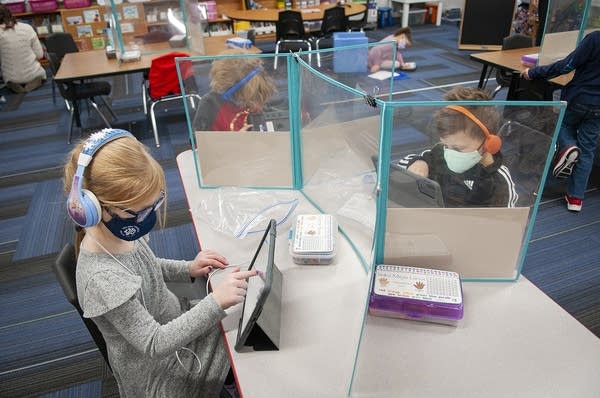Another return to school, with only 6,000 vaccine doses for MN teachers, child care workers

Clockwise from left, Charlotte Brooks, Harper Honetschlager and Kellen Friedrich work on their iPads in Bridget Powell's kindergarten class at South Elementary in St. Peter, Minn., on Tuesday. Plastic dividers were placed on the group tables to maintain social distancing between students.
Jackson Forderer for MPR News
Go Deeper.
Create an account or log in to save stories.
Like this?
Thanks for liking this story! We have added it to a list of your favorite stories.


